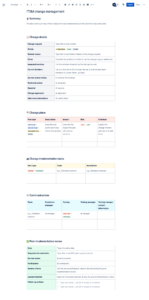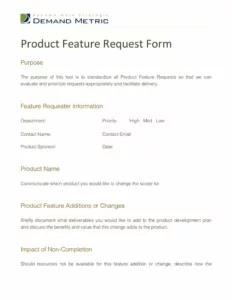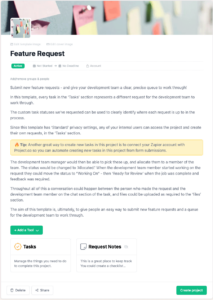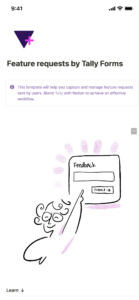Utilizing a standardized form streamlines the development process by minimizing ambiguity and reducing back-and-forth communication. Clearer requests lead to more accurate estimations, faster implementation, and higher quality results. Furthermore, standardized documentation improves project tracking and knowledge management.
This article will delve into the key components of a well-designed submission form, exploring best practices for implementation and offering practical examples for various software development contexts.
Key Components of a Feature Request Form
Effective feature requests require specific information to ensure clarity and facilitate efficient implementation. The following components constitute a robust submission framework.
1. Title/Summary: A concise, descriptive title summarizing the requested functionality. Brevity and clarity are essential.
2. Description: A detailed explanation of the desired feature, including the problem it solves or the benefit it provides. Specific use cases and examples enhance clarity.
3. Priority: An indication of the request’s urgency, often categorized as low, medium, or high. This helps prioritize development efforts.
4. Target User: Identification of the intended user group or persona who will benefit from the feature. This provides context for development and testing.
5. Proposed Solution: A suggested approach to implementing the feature, including technical considerations or design mockups. This empowers developers with potential solutions.
6. Acceptance Criteria: Specific, measurable, achievable, relevant, and time-bound (SMART) criteria that define when the feature is considered complete and functional.
7. Attachments: Supporting documentation, such as wireframes, user stories, or competitor examples, to further clarify the request.
By incorporating these elements, development teams receive the necessary information to assess, prioritize, and implement feature requests effectively, resulting in improved software quality and user satisfaction.
How to Create a Software Feature Request Template
Creating a standardized template ensures consistent and comprehensive feature requests, facilitating efficient processing and implementation. The following steps outline the process of developing an effective template.
1: Define Required Fields: Determine the essential information needed to evaluate and implement feature requests. Consider factors such as title, description, priority, target user, proposed solution, acceptance criteria, and attachments.
2: Choose a Format: Select a suitable format for the template, such as a word document, spreadsheet, or online form. The chosen format should facilitate easy completion and sharing.
3: Structure the Template: Organize the chosen fields logically within the template to enhance readability and completion. Clear headings and concise instructions improve usability.
4: Provide Clear Instructions: Include clear and concise instructions for each field, explaining the expected input and providing examples where necessary. This minimizes ambiguity and ensures consistent data quality.
5: Test and Refine: Pilot test the template with a small group of users and gather feedback. Iteratively refine the template based on feedback to optimize its effectiveness.
6: Implement and Communicate: Deploy the finalized template and communicate its use to all stakeholders. Provide training or documentation to ensure proper utilization.
A well-designed template, implemented effectively, streamlines the feature request process, leading to improved communication, efficient development cycles, and higher quality software.
Standardized forms for requesting software features provide a crucial framework for effective communication between stakeholders and development teams. Structured information gathering, facilitated by well-designed templates, ensures clarity, completeness, and consistency in submitted requests. This reduces ambiguity, streamlines workflows, and ultimately contributes to higher quality software development outcomes.
Effective implementation of these standardized processes represents a significant investment in improving development efficiency and product quality. Organizations that embrace structured feature request management are better positioned to deliver valuable software solutions that meet user needs and achieve business objectives.



